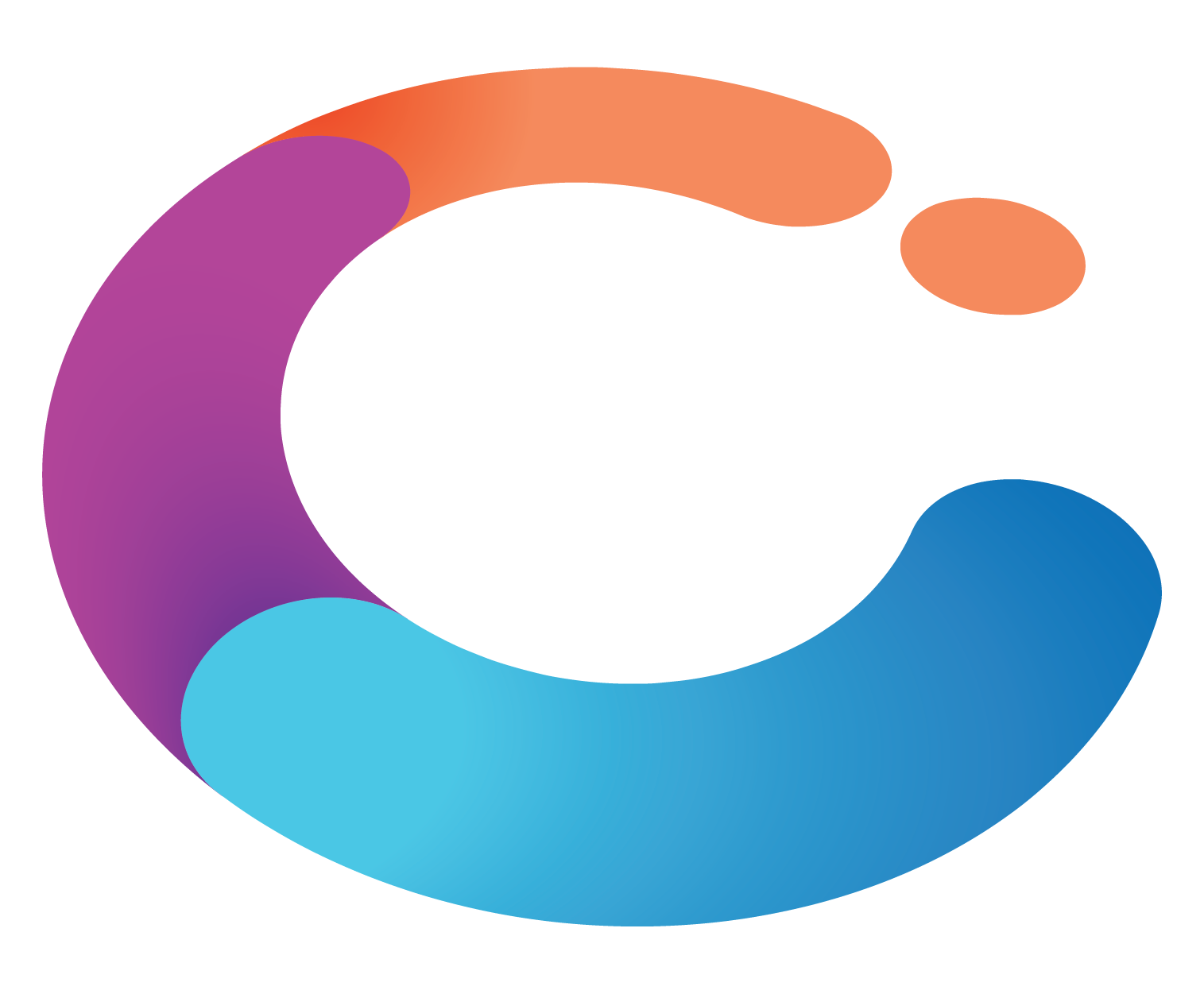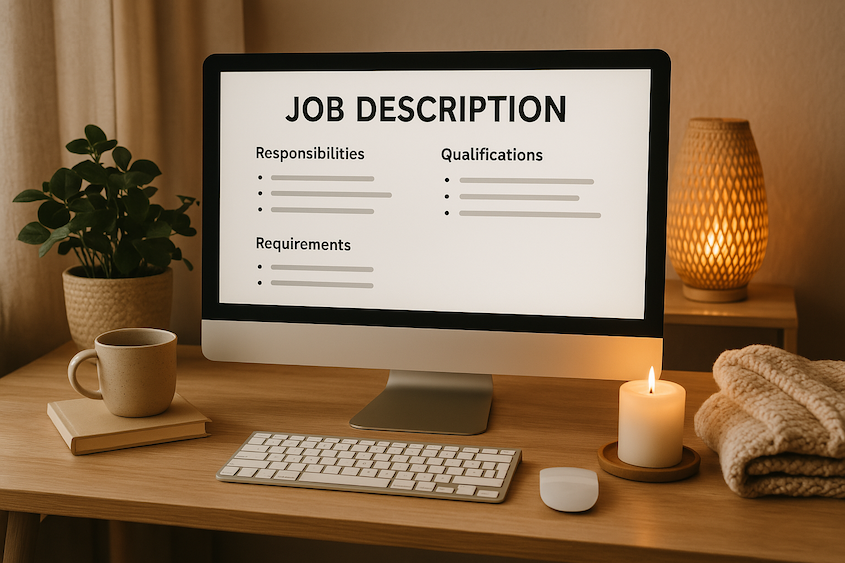How to Post Job Ads on LinkedIn: A Step-by-Step Guide for HR Managers
To effectively post job ads on LinkedIn, HR managers should implement a structured process that encompasses:
Engage
|
Hire
|
Develop
|
Assure
|
|
Deeply understand your organisation with science-backed analytics on your culture, team design, and engagement. |
Automatically match to candidates who are a great fit for your team culture and who are intrinsically motivated to succeed. |
Back your onboarding, compliance and skill development with industry-leading credentialling, competency and capability expertise.
|
Reimagine skills assessment and certification with dedicated tools designed to elevate your competency frameworks.
|
.png?width=383&height=200&name=team%20(1).png)
14 min read
 Compono
Mar 31, 2025 10:12:57 AM
Compono
Mar 31, 2025 10:12:57 AM

Best practices for LinkedIn job ads underscore the significance of clear job titles, engaging summaries, and targeted audience strategies to effectively attract top talent. This article elaborates on how leveraging LinkedIn's advanced features, integrating visual content, and steering clear of common pitfalls can substantially improve recruitment outcomes. By doing so, HR professionals are better equipped to connect with a diverse and qualified applicant pool.
LinkedIn has emerged as a pivotal tool for recruitment, connecting HR professionals with a vast network of over 900 million users. Integrated with Compono Hire, this streamlines the hiring process, enabling companies to identify candidates who not only possess the requisite skills but also fit seamlessly into their organisational culture. As the job market evolves, with a significant percentage of individuals actively seeking new opportunities, the strategic use of LinkedIn becomes increasingly vital.
By harnessing advanced search functionalities and AI-driven insights, recruiters can refine their talent acquisition strategies, ensuring they attract top-notch candidates in an ever-competitive landscape. This article delves into the significance of LinkedIn in modern recruitment, offering insights into:
LinkedIn has established itself as the premier platform for recruitment, with a user base exceeding 900 million worldwide. This vast network offers HR professionals unmatched access to a diverse array of applicants, enabling the identification of individuals who not only possess essential skills but also resonate with the company culture. The platform's advanced search functionalities empower recruiters to filter candidates by specific criteria such as industry, experience, and location, ensuring that LinkedIn job ads reach the most pertinent audience.
Looking ahead in 2025, when 58% of individuals globally are expected to pursue new job opportunities, the role of LinkedIn in recruitment strategies becomes increasingly critical. The platform's professional networking features cultivate relationships that can result in valuable referrals, significantly improving the quality of hires. Additionally, LinkedIn's dedication to incorporating AI-driven functionalities—such as personalised learning experiences and AI-generated content summaries—promises even greater efficiencies in recruitment processes for HR professionals.
Expert insights underscore the importance of LinkedIn in contemporary recruitment. Noel Brown, Global Head of Talent Acquisition at HSBC, remarks, "We have more information than ever before, greater insights on our own workforce, the labour market, and the skills we need to enable our growth strategy." This perspective highlights the need for HR professionals to prioritise LinkedIn in their recruitment strategies to maintain competitiveness in a dynamic job market.
As organisations navigate the swiftly evolving work landscape, effectively leveraging LinkedIn will be essential for cultivating aligned and productive teams. This approach emphasises the integration of predictive insights and scientifically-backed assessments to challenge outdated hiring practices and subjective biases. By employing a comprehensive workforce management and payroll solution, HR leaders can refine their recruitment strategies through LinkedIn job ads, ensuring they attract top talent through informed, data-driven decisions.
The alignment of AI in recruitment strategies with the platform promotes the trend of skills-based hiring, ultimately resulting in improved organisational outcomes. Furthermore, Compono's solutions also focus on culture-match, employee engagement and development, ensuring that the right individuals not only meet job requirements but also flourish within the company culture.
To create compelling job ads on LinkedIn, HR professionals should focus on several key elements that not only attract candidates but also enhance application rates:
Clear Job Title: Utilise specific and descriptive titles that accurately reflect the role. A well-defined job title can significantly influence application rates, as individuals are more likely to apply when they clearly understand the position.
Engaging Job Summary: Begin with a brief overview that encapsulates the essence of the position and the company culture. This summary should resonate with potential applicants, drawing them in and encouraging them to read further. Compono's commitment to mapping culture and engagement can enhance this section, showcasing how the company values alignment between applicants and organisational ethos.
Detailed Responsibilities: Clearly outline the key responsibilities and expectations for the role. Offering a thorough list assists applicants in evaluating their suitability for the position and comprehending what success entails in the role.
Qualifications and Skills: Specify the required qualifications, skills, and experience, while remaining open to transferable skills. Highlighting the importance of diverse backgrounds can attract a wider range of applicants, particularly in today's competitive job market. As Joanna Plohl, Group HR Manager, noted, "This allows us to look beyond our industry to find quality individuals who possess transferable skills and fit right in."
Company Overview: Offer insights into the company’s mission, values, and culture. This information is crucial for attracting individuals who align with the organisation’s ethos, especially as 98% of hiring teams are leveraging social recruiting to connect with potential hires. Additionally, highlighting the innovative HR solutions, including commitments to remote work opportunities, structured career progression, and employee wellness programs, can further draw applicants in today's market. Importantly, Compono provides science-backed insights that help streamline the hiring process through effective LinkedIn job ads, allowing HR teams to focus on finding the best fit for their organisation.
Call to Action: Encourage applicants to apply by providing clear instructions on how to submit their applications. A strong call to action can significantly increase the likelihood of individuals taking the next step.
Incorporating these elements not only enhances the effectiveness of job ads but also aligns with the current trend where almost 44% of remote employees report feeling isolated or disconnected. By crafting engaging and informative job postings, companies can foster a sense of connection and community, ultimately attracting top talent who are eager to contribute to a vibrant workplace. This is particularly important in the rapidly changing work landscape, where aligned and productive teams are essential for success.
Compono is here to do the heavy lifting in your hiring process, ensuring you attract applicants who are most likely to succeed.
To effectively target your audience on LinkedIn, consider implementing the following strategies:
Utilise LinkedIn's Targeting Features: Take advantage of LinkedIn's advanced targeting options, which allow you to filter individuals by job title, industry, and location. This precision ensures that your LinkedIn job ads reach the most suitable individuals, increasing the likelihood of attracting top talent.
Create Applicant Personas: Develop comprehensive profiles of your ideal applicants, detailing their skills, experiences, and motivations. This approach enables you to tailor your LinkedIn job ads to resonate with the specific attributes and interests of your target audience, enhancing engagement and response rates.
Engage with Passive Candidates: Leverage LinkedIn's networking capabilities to connect with passive candidates—those who may not be actively seeking new opportunities but could be open to them. By fostering relationships and engaging in meaningful conversations, you can tap into a broader talent pool that might not be visible through traditional job postings.
Monitor Engagement Metrics: Regularly analyse the performance of your job ads to identify which demographics are responding most positively. This data-driven approach allows you to refine your targeting strategies, ensuring that your recruitment efforts are both effective and efficient.
Leverage LinkedIn's Lead Generation Effectiveness: Recognise that LinkedIn's lead generation capabilities are 227% more effective than those of other networks. This statistic highlights the platform's potential for attracting top-tier talent, making it an essential tool in your recruitment arsenal.
Stay Informed on User Engagement Trends: With roughly 40% of EU LinkedIn users logging in monthly, particularly in countries like Finland and the Netherlands, understanding regional engagement trends can help you tailor your job ads to specific markets, maximising their impact. For instance, consider adjusting your messaging or targeting strategies to align with the preferences of users in these regions.
Implement Case Studies on Targeting Candidates: Utilise insights from successful case studies. By incorporating these strategies into your LinkedIn job ads, you can enhance your recruitment process, attract the right individuals, and align personal strengths with organisational needs.
Empathetic Leadership in Recruitment: Emphasise the importance of empathetic leadership in your recruitment strategies. Drawing inspiration from Nobel laureate insights, understanding the needs and motivations of applicants can create a more engaging and supportive hiring process that resonates with potential employees. This approach not only enhances employee engagement but also fosters a positive organisational culture.
Redefining Recruitment with Psychometrics: As the recruitment landscape evolves, consider shifting from traditional CV assessments to psychometric evaluations. This transformation enables a more comprehensive understanding of applicants' capabilities and potential fit within your organisation, ultimately leading to more informed hiring decisions. Addressing the question of whether CVs are losing their edge, it is clear that psychometric evaluations provide a more nuanced view of individual potential.
Harness Predictive Insights: Utilise predictive insights from the platform to align individuals with positions where they are most likely to excel. By utilising data-driven approaches, you can optimise your hiring processes and ensure that your organisation is equipped with the right talent for future challenges.
Incorporating visual content into job advertisements can dramatically enhance their effectiveness and attract the right talent, especially when utilising predictive insights. Here are some strategies to consider:
Use High-Quality Images: Including images that reflect your company culture—such as team events, office environments, or employee interactions—provides applicants with a glimpse into what it’s like to work at your organisation. This visual depiction fosters a more relatable and welcoming environment, which insights can assist in customising to draw the most suitable individuals.
Create Engaging Videos: Short videos featuring current employees discussing their experiences offer authentic insights into the company culture and the specific role. This personal touch humanises your brand and helps candidates envision themselves as part of your team. Compono's technology can assist in identifying which aspects of your culture resonate most with potential applicants.
Infographics: Utilising infographics to present key information about the job and the company makes the content more visually appealing and easier to digest. Infographics effectively summarise responsibilities, qualifications, and company values, making them more memorable for potential applicants. The predictive insights from this tool can guide the creation of these infographics to highlight the most relevant information.
Visual Job Descriptions: Designing visually engaging job descriptions that highlight key responsibilities and qualifications significantly improves readability. By breaking down information into digestible sections with visuals, individuals are more likely to engage with the content and retain important details. Compono's solutions can optimise these descriptions based on data-driven insights about applicant preferences.
The impact of multimedia in job ads is supported by recent findings, indicating that users who encounter immersive, actionable ads are 59% more likely to recall the brand. This underscores the necessity of integrating visual elements into recruitment strategies. Additionally, the rapidly changing work landscape demands aligned and productive teams; yet, many companies still rely on outdated models for decision-making, as highlighted in the case study titled 'Why It Matters Now.'
This context emphasises the need for companies to adapt their hiring strategies to remain competitive.
Moreover, expert insights reveal that leveraging video in LinkedIn job ads can significantly enhance applicant engagement. Videos capture attention and convey the company’s personality and values more effectively than text alone.
In summary, the strategic use of visual content in job advertisements, particularly when enhanced by Compono's predictive insights, can significantly improve recruitment outcomes. It is essential for HR professionals to embrace these multimedia approaches in their hiring processes. However, it is important to note that only 20% of bloggers report strong results, down from 30% five years ago, highlighting the challenges in creating engaging content.
This further emphasises the importance of visual elements in job ads.

To ensure your job ads are accessible to mobile users, implement the following best practices:
Responsive Design: Utilise a responsive design that automatically adjusts to various screen sizes. This ensures that job ads are easily readable and visually appealing on smartphones and tablets, catering to the increasing number of job seekers using mobile devices.
Concise Content: Craft job descriptions that are succinct and focused. Highlight essential information such as job title, location, and application deadline prominently at the beginning. This approach not only captures attention quickly but also respects the limited time of mobile users.
Streamlined Application Process: Simplify the application process by allowing individuals to apply directly through their mobile devices. Remove unnecessary steps and ensure that the application form is mobile friendly, allowing for a smooth and efficient experience.
Regular Usability Testing: Conduct regular tests of your job ads on various mobile devices to ensure a seamless user experience. This practice helps identify any potential issues that could hinder the application process, allowing for timely adjustments.
Accessibility Considerations: Ensure that your job ads are accessible to all users, including those with disabilities. Use clear fonts, adequate contrast, and alt text for images to enhance readability and usability on mobile devices.
Engaging Visuals: Incorporate engaging visuals that are optimised for mobile viewing. Images and videos can enhance the appeal of your job ads, making them more attractive to potential applicants.
Mobile Job Ad Accessibility Statistics: Be aware that mobile optimisation significantly impacts application rates. Statistics indicate that mobile-optimised job ads can lead to higher engagement and conversion rates, as applicants are more likely to complete applications on devices that are easy to use. Notably, the job mobility rate for individuals aged 65 years and over was 1.7%, highlighting the importance of reaching diverse age groups through effective mobile job ads.
By following these best practices, you can enhance the effectiveness of your LinkedIn job ads, ensuring they reach and resonate with a broader audience of mobile job seekers.
This approach, emphasises the need for aligned and productive teams, reinforcing the importance of effective mobile job advertising strategies. Additionally, consider utilising free resources available to improve your digital marketing skills and strategies, which can further enhance your job ad effectiveness.

To effectively measure the success of your LinkedIn job ads, focus on the following key metrics:
Click-Through Rate (CTR): This metric indicates the percentage of users who click on your job ad after viewing it. A higher CTR suggests that your ad is compelling and effectively attracting interest. The average CTR for search ads is approximately 1.91%, while display ads typically see a CTR of around 0.35%. Understanding these benchmarks can help you gauge your ad's performance.
Application Rate: This metric tracks the number of applications received in relation to the number of views your job ad receives. A strong application rate indicates that your ad not only captures attention but also converts that interest into actionable applications.
Source of Hires: Examining where your successful applicants come from can offer insights into which job ads are most effective. This data helps you refine your advertising strategy and allocate resources to the most productive channels.
A/B Testing: Implement A/B testing by creating different versions of your job ads to determine which elements resonate best with your target audience. This approach allows for data-driven adjustments, enhancing the overall effectiveness of your recruitment efforts. By leveraging these metrics, HR professionals can optimise their LinkedIn job ads, ensuring they attract the right talent and improve overall hiring outcomes. Additionally, incorporating Work Personality assessments can deepen insights into applicants' strengths, fostering better team dynamics and collaboration.
The Work Personality assessment tool specifically helps teams understand individual personality types, enabling them to leverage these strengths for improved collaboration. As Joanna Plohl, Group HR Manager at Clarendon Homes, states, 'This enables us to look beyond our industry to find quality candidates who have transferable skills and fit right in.' This perspective highlights the importance of understanding individual strengths in recruitment, aligning with the philosophy that emphasises unlocking potential through tailored approaches.
Furthermore, in today's rapidly changing work landscape, where aligned and productive teams are crucial, it reinforces the need for effective job advertising strategies that contribute to overall business success. Strategic job advertising, coupled with Compono's predictive insights, enables HR leaders to make informed choices that improve applicant matching and optimise learning development management.
To enhance the effectiveness of your job advertisements, it is crucial to avoid common pitfalls while leveraging innovative HR solutions like those offered by Compono:
Vague Job Titles: Job titles must be precise and accurately represent the role. A clear title not only attracts suitable applicants but also sets the tone for the expectations of the position. Research indicates that vague job titles can significantly reduce the number of qualified applicants, as individuals may overlook roles that do not clearly align with their skills and experiences.
Overly Complex Language: Using jargon or convoluted language can alienate potential applicants. Clear and straightforward language is essential to ensure that your job ad is accessible to a broader audience. Simplifying your messaging can lead to a more diverse group of applicants who feel empowered to apply. Given that 70% of applicants use Google to search for jobs, ensuring your job ads are SEO-friendly is vital for visibility. This method can assist in crafting clear messaging that resonates with a wider audience.
Neglecting Salary Information: Transparency regarding salary ranges can greatly enhance your recruitment efforts. Incorporating this information not only draws applicants who align with your budget but also promotes trust and transparency from the outset. Candidates are increasingly seeking clarity on compensation, and failing to provide this can lead to disengagement early in the hiring process.
Ignoring Company Culture: Communicating your company culture is vital for attracting individuals who will thrive within your organisation. A lack of emphasis on culture can lead to misalignment, where individuals may not fit well with your team dynamics or values. Highlighting your culture in job ads helps candidates self-select based on their compatibility with your organisation. This organisation specialises in mapping company culture, providing the tools to effectively convey your organisational values and environment in job advertisements.
By addressing these common mistakes and utilising innovative HR solutions, HR professionals can significantly enhance the effectiveness of their LinkedIn job ads. This not only improves the quality of applicants but also aligns hiring practices with the strategic goals of the organisation. As the work landscape evolves, making informed and thoughtful decisions in job advertising becomes increasingly critical for attracting top talent.
With 77% of mid-sized companies viewing HR as a strategic function, it is essential to approach job advertising with a strategic mindset.
To excel in job advertising, HR professionals should prioritise the following strategies:
Engage in Continuous Learning: Actively participate in workshops, webinars, and industry conferences to remain informed about the latest trends and best practices in recruitment. Continuous learning is crucial, as organisations that invest in employee development see significant increases in productivity and profitability. In fact, companies with engaged employees report a 21% increase in business profitability. As Jenny Lin, Global Head of Learning and Growth, emphasises, embracing lifelong learning is essential for cultivating a growth mindset within organisations.
Follow Industry Leaders: Subscribe to blogs, podcasts, and newsletters from influential figures in HR and recruitment. This practice not only provides insights into emerging strategies but also helps HR professionals stay updated on recruitment trends.
Experiment with New Tools: Regularly explore innovative recruitment technologies and platforms, such as Compono's predictive insights and all-in-one workforce management solution, that can enhance job advertising efforts. This focus on user experience can significantly impact recruitment success.
Solicit Feedback: Actively gather feedback from candidates and hiring managers to pinpoint areas for improvement in job ads and recruitment processes. This iterative approach fosters a culture of continuous improvement, ensuring that recruitment strategies remain effective and aligned with organisational goals. By implementing these strategies, HR professionals can navigate the evolving landscape of job advertising and enhance their recruitment success.

Harnessing the power of LinkedIn in recruitment is essential for organisations aiming to thrive in today's competitive job market. The platform offers unmatched access to a diverse talent pool, enabling HR professionals to identify candidates who not only possess the right skills but also align with company culture. Crafting compelling job advertisements, targeting the right audience, and leveraging multimedia significantly enhance hiring processes.
Moreover, integrating AI-driven insights and predictive analytics streamlines recruitment strategies, ensuring organisations attract and retain top talent. As the job market continues to evolve, the importance of employing effective job advertising techniques becomes increasingly clear. By avoiding common pitfalls and embracing innovative solutions, HR leaders can optimise recruitment efforts and build aligned, productive teams.
Ultimately, staying ahead in recruitment requires a commitment to continuous learning and adaptation. Engaging with industry trends and utilising advanced tools allows organisations to refine hiring practices and foster a positive candidate experience. This strategic approach not only enhances recruitment outcomes but also contributes to long-term organisational success in a rapidly changing landscape.
Why is LinkedIn considered the premier platform for recruitment?
LinkedIn has over 900 million users worldwide, providing HR professionals with unparalleled access to a diverse pool of applicants, allowing them to find candidates who possess essential skills and align with company culture.
How does LinkedIn assist recruiters in finding suitable candidates?
LinkedIn offers advanced search functionalities that enable recruiters to filter candidates by specific criteria such as industry, experience, and location, ensuring job ads reach the most relevant audience.
What is expected to happen in the job market by 2025?
By 2025, it is anticipated that 58% of individuals globally will seek new job opportunities, making LinkedIn's role in recruitment strategies increasingly vital.
How does LinkedIn facilitate valuable referrals in recruitment?
The platform's professional networking features help cultivate relationships that can lead to valuable referrals, which significantly enhance the quality of hires.
What advancements is LinkedIn making to improve recruitment processes?
LinkedIn is integrating AI-driven functionalities, such as personalised learning experiences and AI-generated content summaries, which are expected to enhance efficiencies in recruitment for HR professionals.
What insights do experts provide regarding LinkedIn's importance in recruitment?
Experts like Noel Brown, Global Head of Talent Acquisition at HSBC, emphasise that HR professionals need to prioritise LinkedIn to gain greater insights into the workforce and labour market, which are essential for maintaining competitiveness.
How can HR leaders refine their recruitment strategies using LinkedIn?
HR leaders can leverage LinkedIn job ads and employ comprehensive workforce management solutions to attract top talent through informed, data-driven decisions, challenging outdated hiring practices and biases.
What are the key elements for creating compelling job ads on LinkedIn?
Key elements include a clear job title, engaging job summary, detailed responsibilities, specified qualifications and skills, company overview, and a strong call to action.
How does a clear job title affect application rates?
A specific and descriptive job title helps applicants understand the role better, significantly influencing their decision to apply.
Why is it important to include a company overview in job ads?
Providing insights into the company's mission, values, and culture is crucial for attracting candidates who align with the organisation's ethos, especially as many hiring teams use social recruiting.
What role does a call to action play in job ads?
A strong call to action encourages applicants to apply by providing clear instructions, which can significantly increase the likelihood of applications.
How can job postings foster a sense of connection among remote employees?
By crafting engaging and informative job postings, companies can create a sense of community, which is particularly important as many remote employees report feelings of isolation.

To effectively post job ads on LinkedIn, HR managers should implement a structured process that encompasses:

The article emphasizes best practices for crafting effective interview questions, highlighting their critical role in assessing candidates'...

The article focuses on the essential functions and concepts within Human Resources (HR) critical for fostering a productive work environment. It...

Job descriptions serve as formal documents that delineate the essential functions, responsibilities, and qualifications for specific positions. They...

Effective interview questions are essential for evaluating candidates' qualifications, thought processes, and cultural fit. By focusing on...

The article outlines best practices for LinkedIn job advertising, emphasising strategies that enhance HR success by leveraging the platform's...